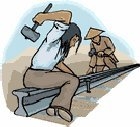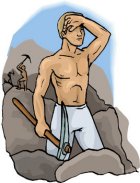
Worksheets and No Prep Teaching Resources
Reading Comprehension Worksheets
The United States Grows
(1865-1900)

The United States Grows
(1865-1900)
 Worksheets and No Prep Teaching Resources Reading Comprehension Worksheets The United States Grows (1865-1900) |
 The United States Grows (1865-1900) |
| edHelper's suggested reading level: | grades 7 to 9 | |
| Flesch-Kincaid grade level: | 5.78 |
|
Rails across America - CP Conquers the Mountains
By Toni Lee Robinson |

|
 1 How much money does it take to build a railroad across a nation? Actually, no one knew the answer to that question. But it became clear that it would be a staggering amount. Something had to be done to help railroad companies get the road built. In 1864, Congress reworked the Pacific Railroad Act. To some, it seemed that they had given away the nation to fund the railroad.
1 How much money does it take to build a railroad across a nation? Actually, no one knew the answer to that question. But it became clear that it would be a staggering amount. Something had to be done to help railroad companies get the road built. In 1864, Congress reworked the Pacific Railroad Act. To some, it seemed that they had given away the nation to fund the railroad. |
Create Weekly Reading Books
Prepare for an entire week at once! |
| Leave your feedback on Rails across America - CP Conquers the Mountains (use this link if you found an error in the story) |
 |
The United States Grows (1865-1900) |
 |
High School Reading Comprehensions and High School Reading Lessons
|
 |
United States
|
|
|
 | Fifty States Theme Unit |
 |
Document Based Activities |